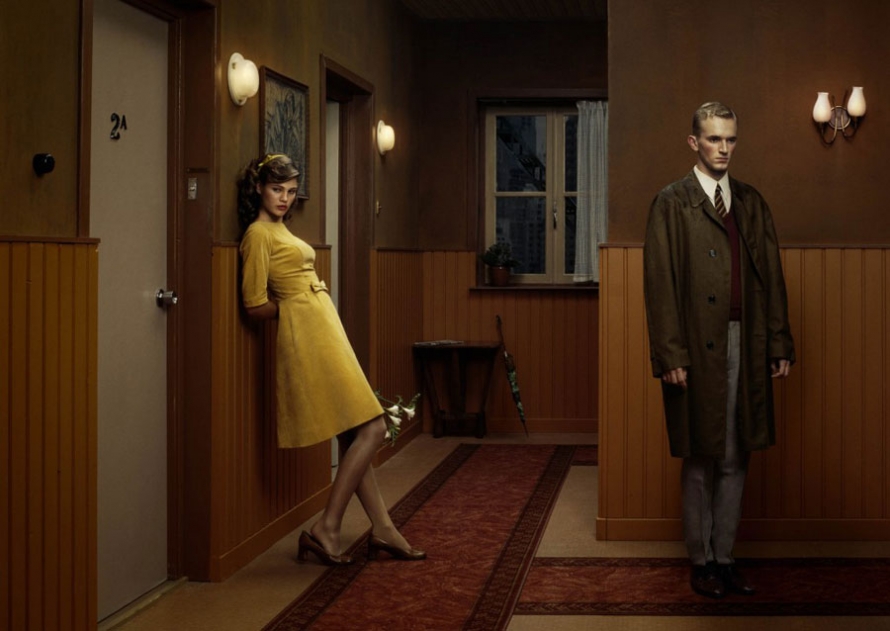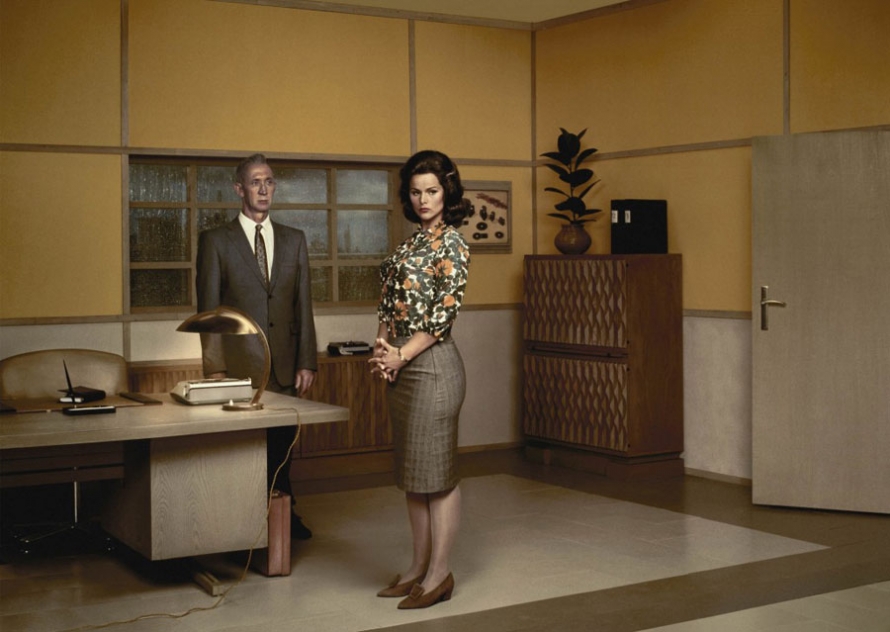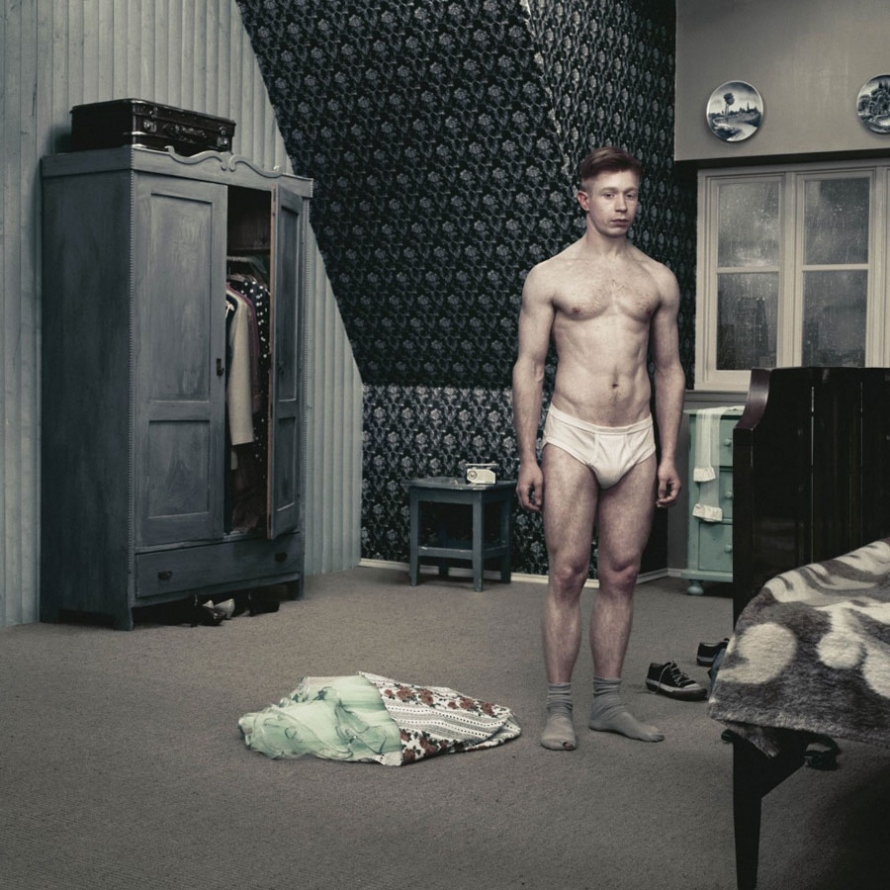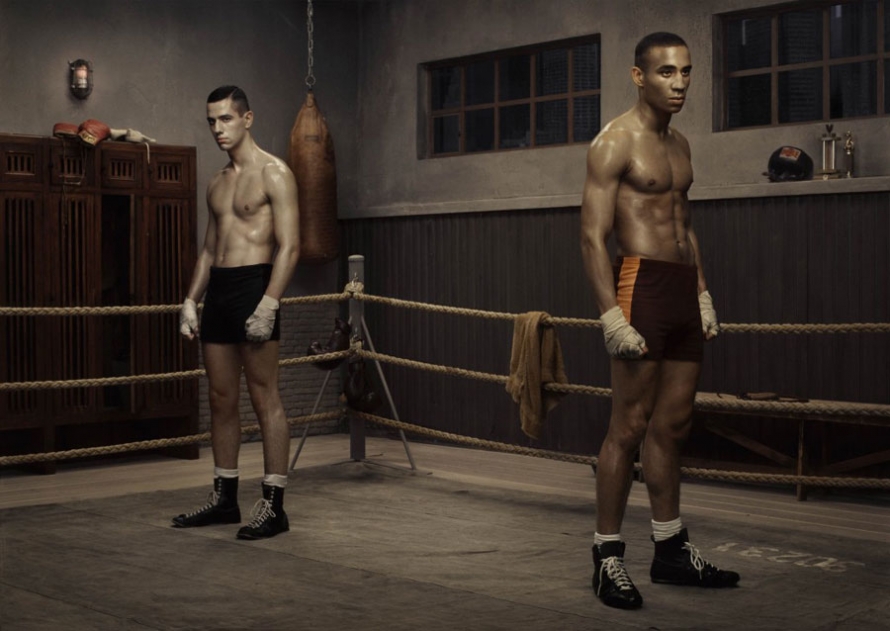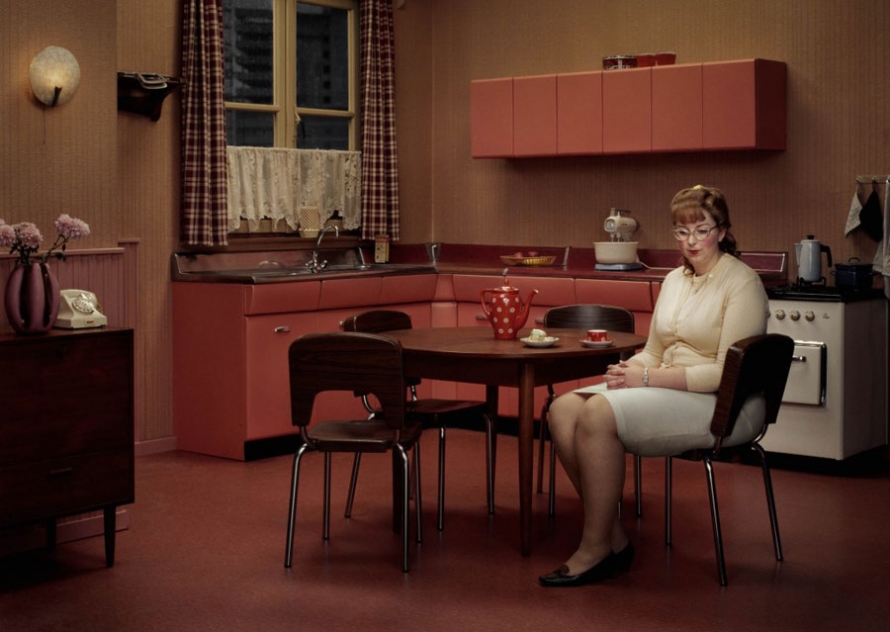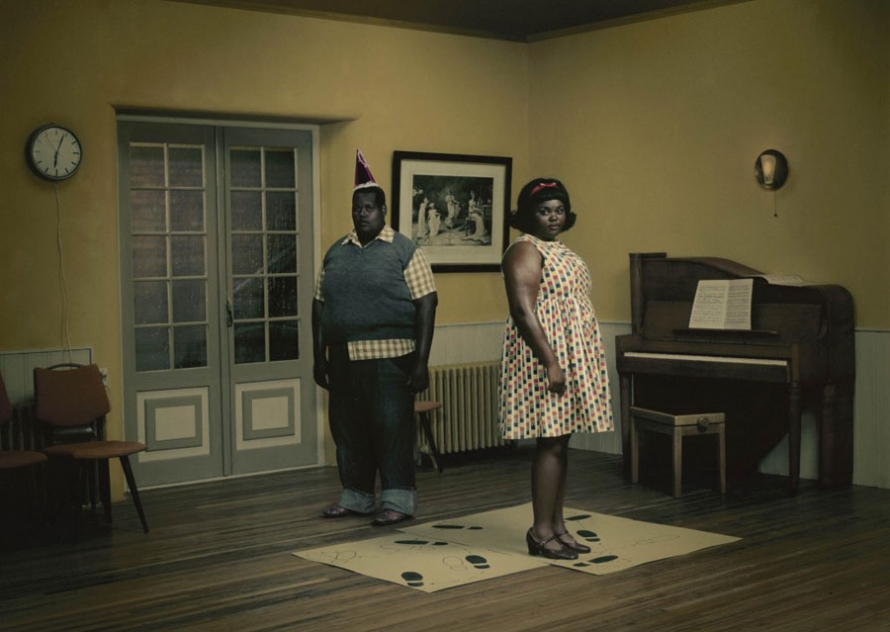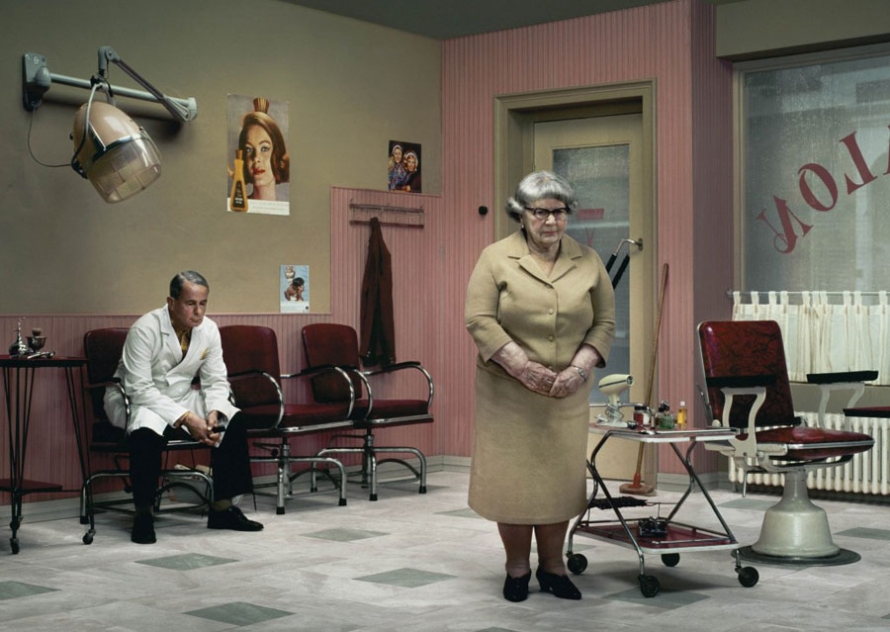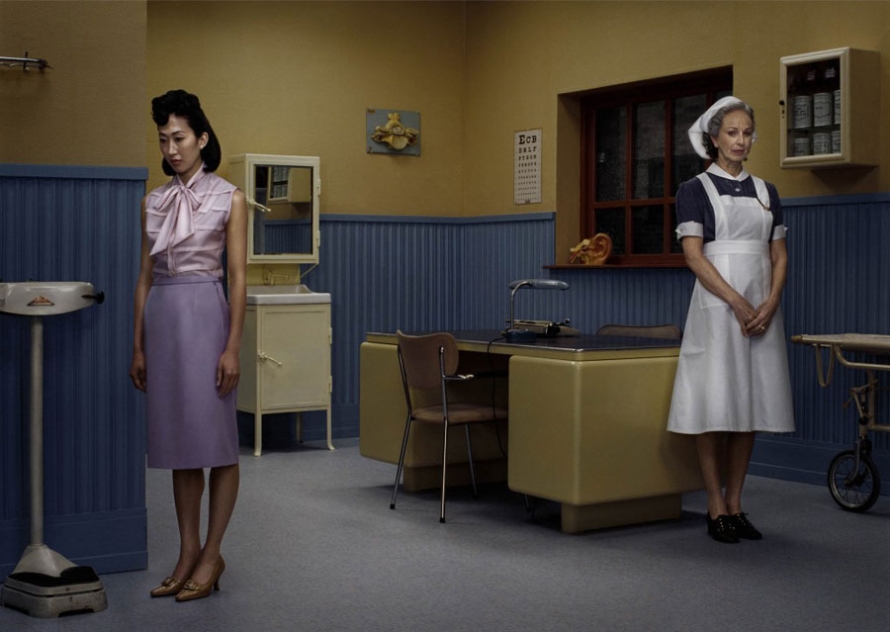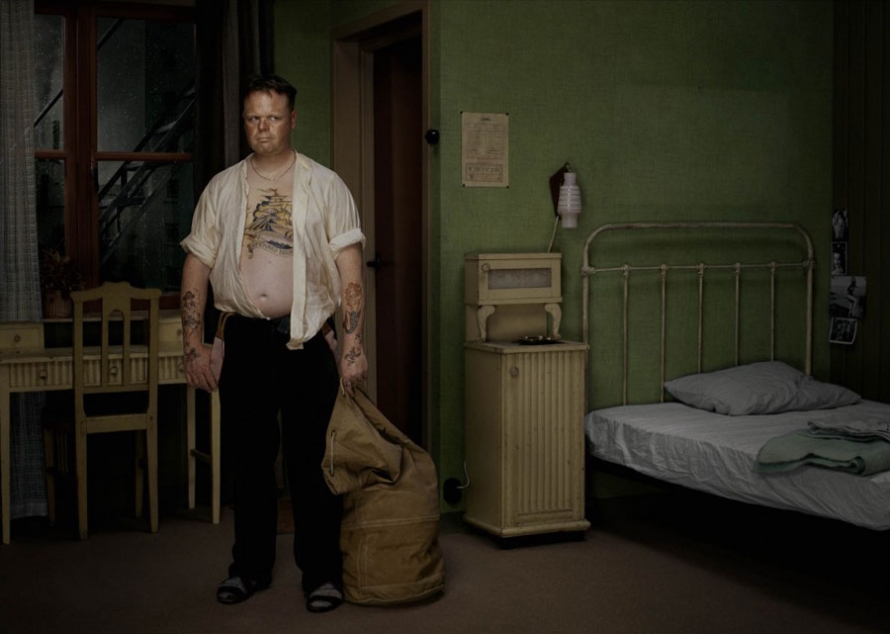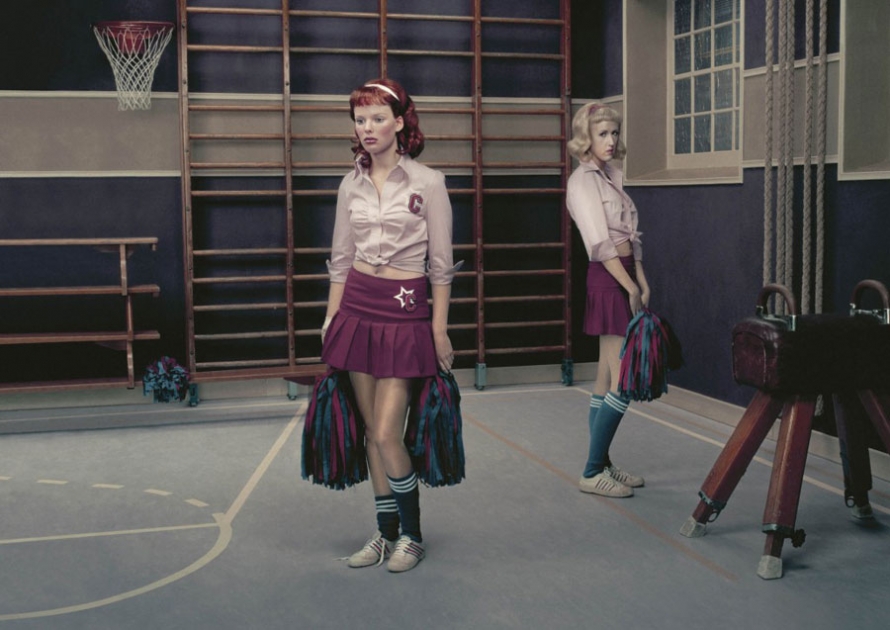With an incredibly detailed eye for life in the 1950s and ’60s, Erwin Olaf’s photographs offer much more than what’s seen at first glance. Subtle variations in color and the tiniest of precise touches render his models into actors whose stories transcend the moment in which they are photographed.
Erwin Olaf lives and works in Amsterdam. His photography and short films have shown around the world, including at the Stedelijk Museum in Amsterdam, the Frankfurter Kunstverein, the MOCCA in Toronto, Galleria Arte Moderna in Bologna, the Montevideo Institute in Amsterdam, the Sztuki Museum in Lodz, Poland, the Chelsea Art Museum in New York, the Australian Centre for Photography in Sydney, the George Eastman House in New York, the Maison Européenne de la Photographie in Paris, the Southeastern Centre For Contemporary Art in North Carolina, the Museum of Modern Art in Moscow, and Space E6 in Shenzhen, China. He has done commissioned work for Microsoft, Nintendo, BMW, and the New York Times Magazine. Olaf’s collections “Dusk” and “Dawn” are on display at Hasted Hunt Kraeutler through March 20, 2010.
What was the inspiration for “Grief?” The inspiration for “Rain?”
The “Rain” series was inspired after 9/11, and I wanted to make something that was rather positive, celebrating freedom. I thought I’d make a series inspired by Norman Rockwell’s work, and then when I started a session it became very clear that this was not the time or the theme for me, and some sadness came in to express my feeling about this time, about our time. So this was the starting point, and it turned into a series, getting away from Norman Rockwell, but it had to do more with the relationships between people—about the moment just before you realize something is happening, the moment between action and reaction, when your boyfriend tells you “I don’t love you anymore, I want to split up,” and just before the moment you realize what he is saying, and I wanted to photograph that series in “Hope,” and then “Rain.”
How do you arrange the setting? How do you find your subjects? Describe a shoot.
All sets are built in my studio. I work with a group of people, a set designer, costume designers, styling, makeup, and hair. What I always liked about the movie industry, and especially the movie industry in the ’50s and ’60s, is that many of them were set-built, and shot on that location. So you can idealize your world and really make your dreams come true for one second in photography. When I have my basic idea, I go to my set designer and we have meetings for set design, costume, and makeup. Then I make my choices, they design the set and costumes, and we build it. Then I can set the details that I want—it’s a very precise procedure to create this dream world, or nightmare.
You call them subjects—the models? In earlier years, it was mostly people I knew or met at parties or on the street, but nowadays, because I’m very busy, it’s mostly casting agencies, modeling agencies. I always look for beauty, but with a big personality. They have to act—they don’t model. They have to act in the pictures. You have to be someone. I like to be as close as possible to the cinema, it’s a big inspiration for me.
There are so many details in your photographs—a tiny hole in a sock, a bandage on one knee. To what extent do you plan these details and to what extent are they the result of preparing a subject for a shoot?
Those little details are almost always created on the set. When it looks too perfect and you feel a lack of character, you start to experiment and look at what you can do. The little details for me are spontaneous, and they’re very essential for every picture.
How does hope come though in these settings?
“Rain” was the starting point of this series, and at that time, I really felt very down. You can see it in the coloring and the casting. They’re more hopeless. And if you look in “Hope,” the coloring is getting better, there are more colors, it’s getting richer. It’s getting positive again. The woman in the kitchen, that is one of my favorites. In itself it’s quite the opposite situation. But the orange coloring of the kitchen, for me, expresses a little bit more hope than what I achieved in “Rain.” Everything is a little bit better done.
What makes rainy days so hard? How does rain make you feel?
I hate them! I know we need them for the harvest and for food and for our health. I live in a very rainy country, the Netherlands. It’s not my favorite weather situation. I have to say the end of January, most of the time it’s getting sadder and sadder, because of the short days and the cold and the rain. It’s an effect on everybody’s mood. Spring and summer and early fall are my favorite seasons. But rain, no. Sometimes at night, I love rain. But not in the day!
What are you working on now?
I still love time travel—I wanted to go now to 1900. It was inspired by photographs of African-Americans from 1900. This became “Dusk.” It turned out after completing that series I went to Moscow, and as I checked into my hotel I saw a very pale white woman with very pale white children in a white room. It gave me the idea to make an opposite series, “Dawn.” So between America and Moscow it’s black and white versus color, left versus right, right versus left—the two form a mirror series.
